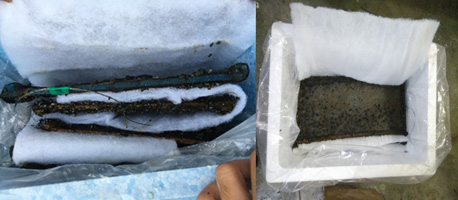 Green mussel (Perna viridis) is an important fishery resource in the Indo-Pacific region. Considering its importance, the grow-out aquaculture for this commodity has already been developed. However, the production of mussel still remains very low which only comprises 0.9% of the total aquaculture production of the country. To ensure increased production, mussel spats should be transported efficiently to guarantee better survival rate.
Green mussel (Perna viridis) is an important fishery resource in the Indo-Pacific region. Considering its importance, the grow-out aquaculture for this commodity has already been developed. However, the production of mussel still remains very low which only comprises 0.9% of the total aquaculture production of the country. To ensure increased production, mussel spats should be transported efficiently to guarantee better survival rate.
Improvements in the grow-out culture practice and transplantation efforts were done to expand mussel farm areas in the country. Expansion and improvement in mussel culture require more number of spats to be transported from the nursery to the different mussel grow-out farms in the country. The spats have to be delivered to the mussel growers in the best possible condition for growing.
To respond to this need, the Philippine Council for Agriculture, Aquatic and Natural Resources Research and Development of the Department of Science and Technology (DOST-PCAARRD), in collaboration with the University of the Philippines (UP) Visayas in Miag-ao, Iloilo funded research projects through the National Mussel S&T Program. The program aims to improve mussel production and secure the sustainability of the mussel industry.
To transport mussel spats at optimum condition, a protocol was developed. The protocol indicates that to ensure better survival, mussel spats should be transported with the settlement substrate still attached.
In land-based nursery, mussel spats are allowed to settle in a nylon black nets. Nylon nets are more convenient to use as it is light and has wider accommodation surface for more number of spats for transport.
Spats should be kept moist during transport, wrapped in damp cloth or sprayed with seawater. Finally, they should be transported in an insulated container such as styrobox provided with ice to maintain the temperature at 20-25oC.
